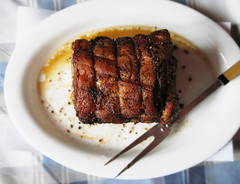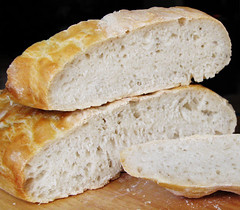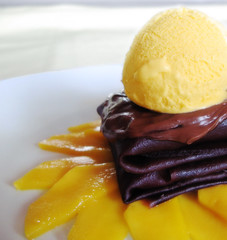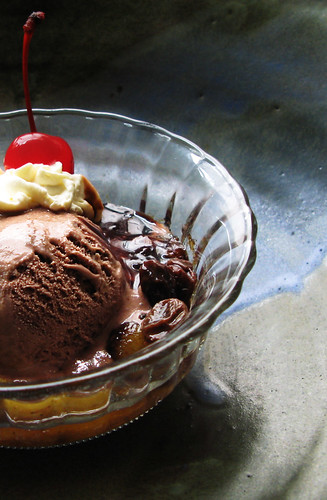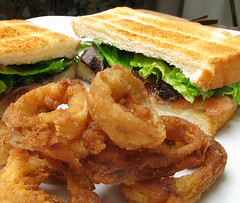Sacher Torte
For my mom's last dinner party, she wanted me to make a dessert, but I knew I couldn't repeat desserts (that would be a wasted opportunity!). So I decided to go with a classic, Sacher Torte. It's a famous cake from Vienna, invented in 1832 by Franz Sacher. It consists of a chocolate butter cake made by the combination method, filled with apricot preserves, and frosted with a thin bittersweet chocolate glaze (in my case it was a ganache). I used Wolfgang Puck's recipe, a true Austrian if I've ever seen one. The glaze recipe was a little thicker than I'd expected and I didn't get a very smooth finish, but the taste was undeniably there. I had reserved a slice which would photograph better than this whole cake but my dad ate it, and he's not even a chocolate or dessert fan. (recipe follows)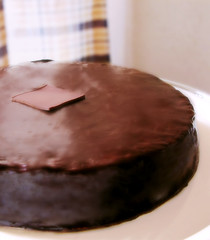
Melt 6 ounces bittersweet chocolate with 6 tablespoons unsalted butter in a microwavable bowl in the microwave on HIGH, stirring every 15 seconds until it's melted and smooth. In a medium-sized deep bowl, beat 4 egg yolks with 3 tablespoons granulated sugar until light and airy, about 5 minutes. Beat in the butter-chocolate mixture and very gently fold in 1/3 cup all-purpose flour. Set aside.
In a medium-sized clean stainless steel bowl, beat 5 egg whites with 1/4 teaspoon salt until soft peaks form. Beat in 5 tablespoons granulated sugar gradually until stiff, glossy peaks form. Fold one-third of the whites into the chocolate mixture to lighten, then fold in the rest of the egg whites until incorporated. Pour into a greased and lined 9-inch cake pan (I suggest lining the bottom and sides as well), then bake in a preheated 175°C (350°F) oven for 40 minutes or until a cake tester in the middle comes out clean. Turn out to a rack and cool. I messed up the top of the cake, so I flipped it over so the bottom is the top of the finished cake with no problem.
Purée 1/2 cup apricot preserves in a blender to get rid of chunks. Split the cake horizontally into 2 and spread the preserves in between. Replace the top layer.
In a small microwavable bowl, nuke 1/4 cup heavy cream until it boils, about 1.5 minutes on HIGH. In a separate microwavable bowl, melt 6 ounces bittersweet chocolate with 2 tablespoons unsalted butter on HIGH, stirring gently every 15 seconds until smooth. Stir the boiled cream into the chocolate gently as not to introduce any bubbles.
Place the filled cake on a rack set over a sheet pan. Pour the chocolate glaze over the center of the cake, using an icing spatula to guide the flow over the sides and to even the glaze out. Smooth the glaze on the sides with the icing spatula. Refrigerate the cake until serving time.








